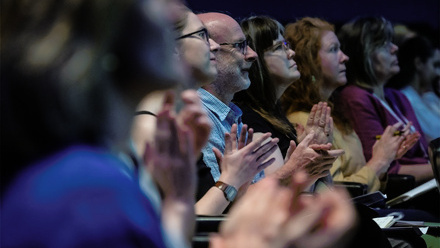All Saints Church, Fleet, is a Grade II listed building by the renowned Victorian architect William Burgess. It was built in 1861-2. In 2015 the church was badly damaged by a vast fire.
One effect of the fire was to partially uncover the original painted scheme in the Chancel, that had been white washed over in the early 20th century.
The paint layers revealed below layers of limewash and modern emulsion were in an extremely deteriorated condition. Certain pigments had fused with the overlying paint due to extremes of heat. As the modern layers flaked away from the substrate they were peeling the original away, sometimes leaving the composition exposed ‘in the negative’ as only the ground layers survive. In other areas the original scheme was preserved in surprisingly good condition, below layers of powdering modern paint which served to buffer the scheme against the fire and subsequent weathering.
Cliveden Conservation undertook a condition assessment and treatment trials (June 2018) focussing on how to stabilise the extremely fragile painting sufficiently to withstand the application – and possible later removal – of a temporary protective covering layer. In 2019 the conservators returned to carry out the consolidation and protection of the decorated surfaces, a provisional treatment until works are undertaken to restore the rest of the church.
Research was carried out to identify now illegible iconographic elements, such as the roundels located on the arch, through comparisons of other schemes by William Burges. In addition, research was undertaken into particular motifs used by the Architect, in a selection of unrealised plans and drawings in the V&A archive. Digital reconstructions were made from the surviving compositional elements at All Saints. This work serves as an important record of how the church was originally decorated, as well as of the style and schemes of Burges. If future church users decide to recreate the original scheme – the preference currently is to restore the undecorated white finish – this work will be essential to the accurate reconstruction of the scheme.
The question arose of what to do with the painting once the functionality of the religious building has been recovered; Keep the paintings covered? Conserve fully and leave them visible? Leave them partially exposed? Cover for protection and reproduce the decorative design above? The discussion and possibilities of these questions are the central axis of this paper and are related to technical, theoretical, ethical and aesthetical aspects.


